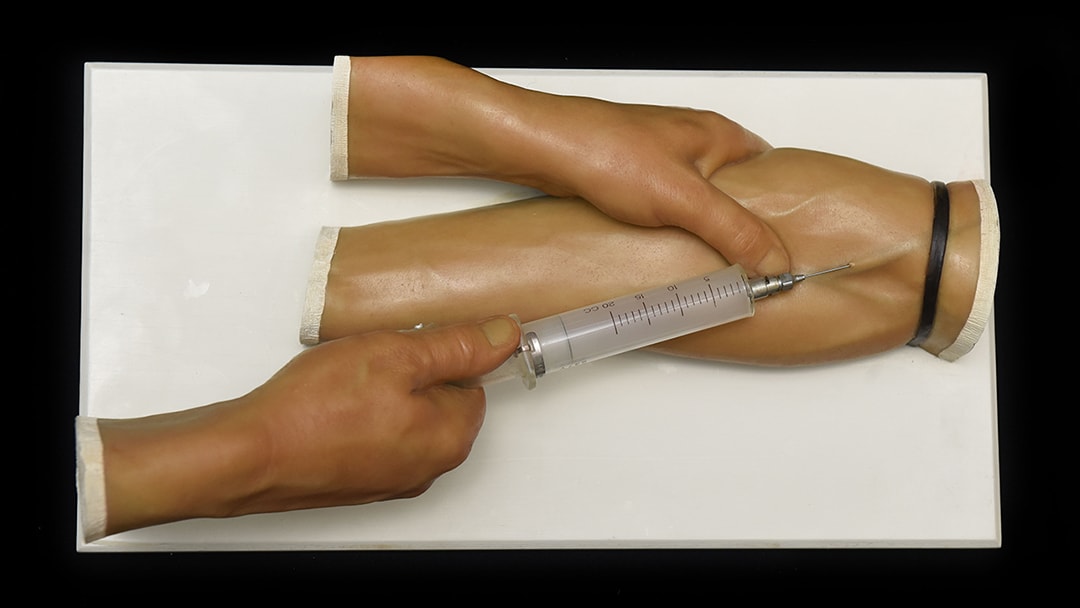
October 30, 2018
When Arthur Bulbulian, D.D.S., submitted his expense report, one item caught the attention of the Mayo Clinic business office. Dr. Bulbulian was staffing Mayo's exhibit at the 1933 Chicago World's Fair. Why, the office wondered, did he need a supply of smelling salts? The answer, it seems, could be traced back to Mayo's Art Department. Staff there had created wax models for the exhibit depicting surgeries that were so realistic, some visitors fainted after viewing them.
Karen Koka can relate to their shock. Koka, an archivist at the W. Bruce Fye Center for the History of Medicine at Mayo Clinic, cares for Mayo's large collection of wax models, most of which were "retired" and put in storage close to 30 years ago. Koka tells us she's still surprised by how lifelike they are.
"The models are very graphic and true to what you'd see in an exam room or operating room," she tells us. "They're an exceptionally visual way to show a condition or technique."
That's exactly why the models were so prized in the early days of Mayo Clinic. As the Mayo brothers became known for their surgical expertise, physicians from around the country were eager to learn from them. One way the brothers shared their work was by using wax models to teach progressive steps in a procedure.
This story originally appeared in In the Loop, an email newsletter and blog that gives a unique perspective on what’s happening around Mayo Clinic.